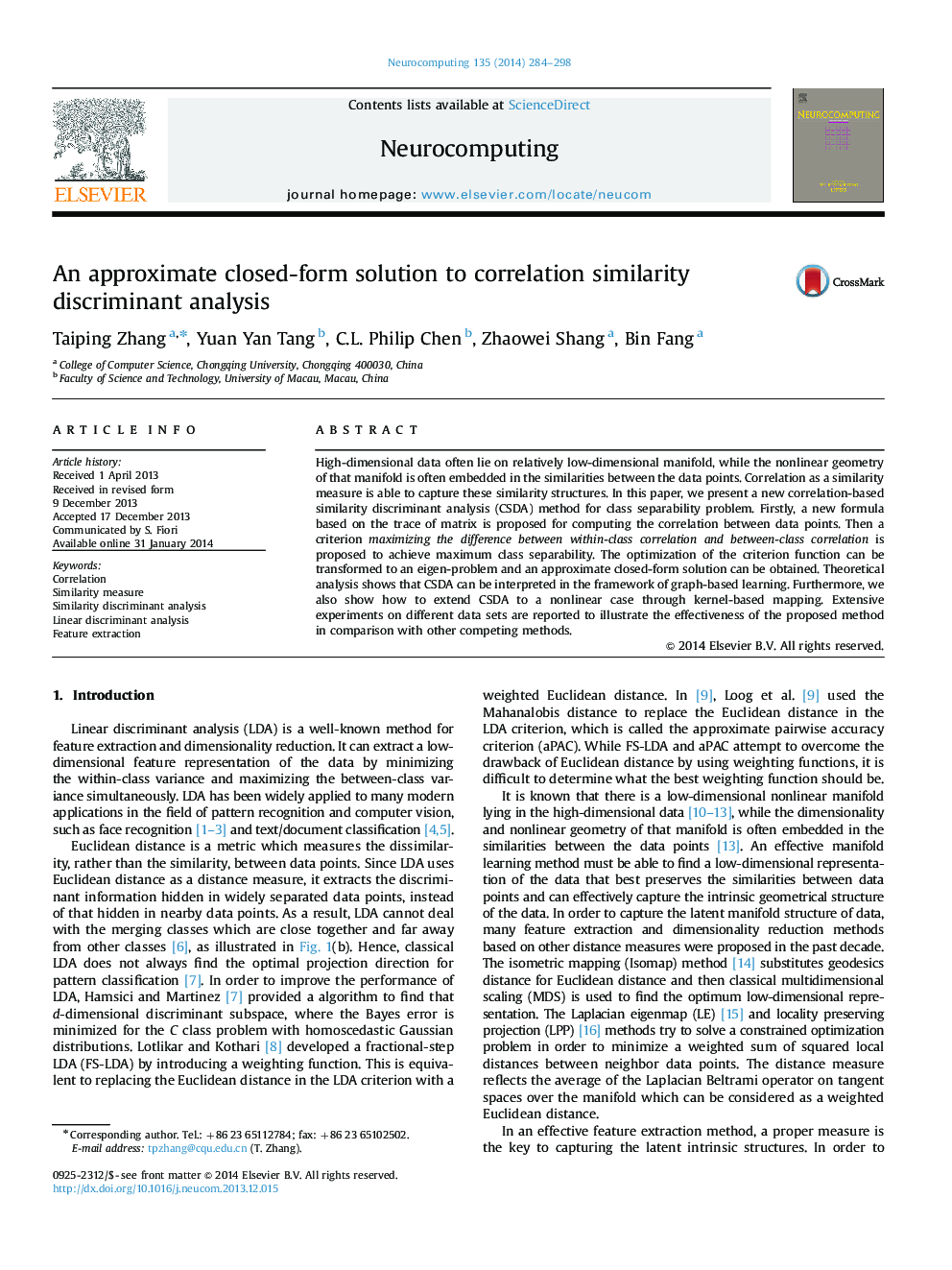| Article ID | Journal | Published Year | Pages | File Type |
|---|---|---|---|---|
| 409994 | Neurocomputing | 2014 | 15 Pages |
High-dimensional data often lie on relatively low-dimensional manifold, while the nonlinear geometry of that manifold is often embedded in the similarities between the data points. Correlation as a similarity measure is able to capture these similarity structures. In this paper, we present a new correlation-based similarity discriminant analysis (CSDA) method for class separability problem. Firstly, a new formula based on the trace of matrix is proposed for computing the correlation between data points. Then a criterion maximizing the difference between within-class correlation and between-class correlation is proposed to achieve maximum class separability. The optimization of the criterion function can be transformed to an eigen-problem and an approximate closed-form solution can be obtained. Theoretical analysis shows that CSDA can be interpreted in the framework of graph-based learning. Furthermore, we also show how to extend CSDA to a nonlinear case through kernel-based mapping. Extensive experiments on different data sets are reported to illustrate the effectiveness of the proposed method in comparison with other competing methods.
